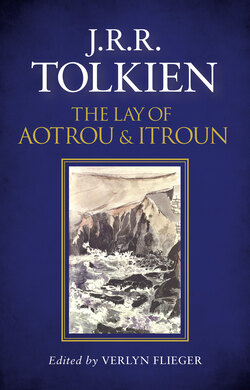Читать книгу The Lay of Aotrou and Itroun - J. R. R. Tolkien - Страница 8
NOTE ON THE TEXT
ОглавлениеThe Lay of Aotrou and Itroun was once previously printed, in The Welsh Review, Vol. IV, no. 4, December 1945. There are three texts of the poem extant (but no original workings). The first is a good but incomplete manuscript that was apparently overtaken by the second text (very little changed from the first), a fine fair copy on which my father wrote at the end a date: Sept. 23 1930. This is notable, for dates on the fair copy manuscript of The Lay of Leithian run consecutively for a week from September 25, 1930 (against line 3220), while the previous date on the manuscript is November 1929 (against line 3031, apparently referring forwards). Clearly then Aotrou and Itroun interrupted the composition of Canto X of The Lay of Leithian.
The third text is a typescript of the manuscript, incorporating a relatively small number of corrections that had been made to it; this typescript is closely similar to that of The Lay of Leithian, and certainly belongs to this time. Both use the same mode of typing direct speech in italic. Subsequently the typescript was heavily revised, with more than a quarter of the original lines undergoing minor change or complete rewriting: but none of these revisions alter the narrative. My father visited Aberystwyth as an examiner in June 1945 and left with his friend Professor Gwyn Jones several unpublished works, Aotrou and Itroun, The Homecoming of Beorhtnoth, and Sellic Spell. This led to the publication of Aotrou and Itroun in The Welsh Review, of which Gwyn Jones was the editor, at the end of that year, at the editor’s request.
There are a few discrepancies between the text printed in The Welsh Review and the typescript which I feel sure was its basis. Nearly all of these are insignificant points of punctuation and spacing. The title in the typescript is Aotrou and Itroun (‘Lord and Lady’). A ‘Breton Lay.’
It is to be noted that it is incorrect to say that Aotrou and Itroun ‘is in alliterative verse, and also incorporates a rhymescheme’ (Humphrey Carpenter, Biography, p. 168). The poem is in octosyllabic couplets, in style closely related to The Lay of Leithian, and alliteration is decorative, not in any way structural, though here and there it becomes very marked:
In the homeless hills was her hollow dale,
black was its bowl, its brink was pale;
there silent on a seat of stone …1
But the Lay of Aotrou and Itroun has a longer history, being in fact a development from the second part of a composite poem called The Corrigan (a Breton word meaning ‘fairy’), which is also given here. There is no evidence for the date of The Corrigan, though it seems unlikely that any long interval separated it from Aotrou and Itroun.
A pencilled note to the first part of this poem says that it was ‘suggested by “Ar Bugel Laec’hiet”, a lay of Cornuaille’ (in Brittany). The metre of the second part, though distinct from that adopted for Aotrou and Itroun, is not so distinct that lines from it could not be taken up into the second work (and in fact there are more such in the earlier versions of Aotrou and Itroun, rejected in the final revision); but the tale is told in a different manner, and contains no suggestion of the essential element in Aotrou and Itroun that the lord was childless, that he went to a witch to obtain her aid, and that she was the fairy of the fountain.
CHRISTOPHER TOLKIEN
